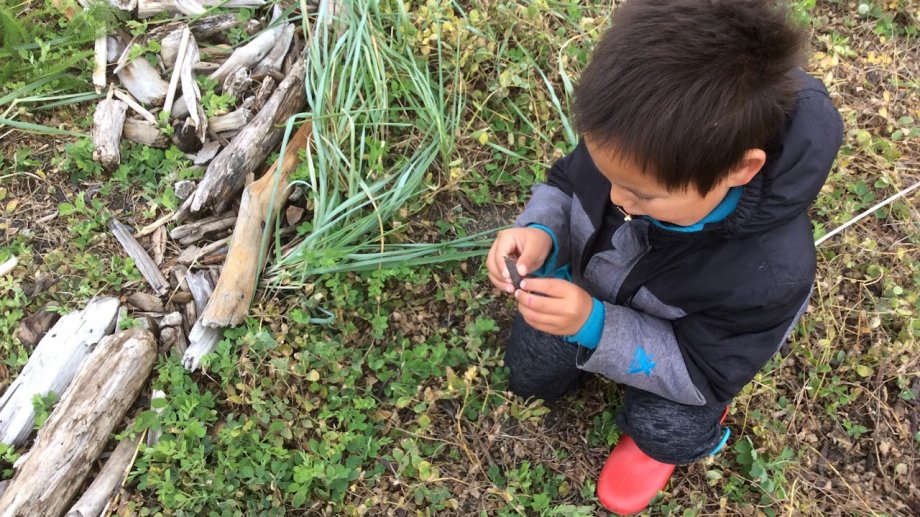Scavenger hunts are timeless for a reason. Both children and adults enjoy scavenger hunts. These activities encourage independent exploration, critical thought and problem-solving. They are also easily applicable from a playground, to a park, to a nature reserve.
Depending on your local environment and ecosystem, you can make your scavenger hunt more or less specific. You can make a general scavenger with items like “something rough” or “something red.” For a more specific and directed hunt, you may include specific specimens, like “the tree with three trunks.” Each type of scavenger hunt will have it benefits, and it is possible to mix elements of both hunts.
EID Connections: Children exercise Spatial Autonomy as they seek each item on the scavenger hunt checklist. Scavenger hunts can also be supported by maps and mapping activities, increasing skills of Environmental Competency. Finally, the activity encourages greater connections with nature, as children feel a sense of accomplishment with each new discovery in nature.

A general scavenger hunt will have a list of descriptive items that could apply to several different natural objects. It may also have items that describe sensory experiences. Children and participants can even help create the list. Such a list could include:
- Something green/red/etc.
- Something that feels rough/smooth
- Something pointy or prickly
- Something beautiful or interesting
- Signs of an animal or animal home
- The sound of a bird
- The sound/smell of running water
Depending on your ecosystem and season, you can include more specific items, like a particular species of tree, a type of lichen, a purple flower, etc. General types of descriptors allow children to express creativity in their discovery and selection of findings. Adding more specific items that you know to be in different locations (or harder to find) may encourage children to wander and explore farther away from the starting point.
Children may work alone, in pairs, or small groups. Participants will not be “collecting” items, but they must have some way of recording their discoveries. This could be through written descriptions, drawings, or pictures taken with a camera or smartphone. If a map of the area is available, children can practice marking the general locations of findings on a map. Alternatively, children could make a map depicting their path and location of findings.
Remember, children don’t need to find everything on the list! Encourage children to take their time and enjoy their explorations. The scavenger hunt is a guide, not a test.
A directed scavenger hunt requires children to find specific items at specific locations. This type of hunt allows for less diversity in the types of items children find. Instead, this hunt requires children to decipher clues or understand directions in order to find each item on the list. Furthermore, this scavenger hunt may require or encourage children to explore off-trail or distant areas that they otherwise would not seek out.
The list of items can be presented in a variety of ways:
- A series of written clues
- Clues drawn as pictures
- Specific descriptors, e.g. “the tree with three trunks,” “the moose antlers,” “the bridge over the stream”
- Specific locations on a map
- Written directions, e.g. “walk past where the trail bends and look to the left”
- Orienteering: providing degrees on a compass and paces to follow from specific locations
- With this activity, pairs or small groups may work best, as children will often be headed towards the same location anyway. To stagger the groups, they may be released at different locations or given clues in different orders.
- Since children are finding specific things, there are a few ways for them to demonstrate that they did indeed find the right object/location:
- Participants can take a picture of the finding with a camera, smartphone, or tablet.
- Questions may be provided to participants that can only be answered by finding the right location/object (e.g. How many prongs did the deer antlers have?).
- The scavenger hunt designer can leave clues or letters at each location. For example, they may leave a letter posted at each location, and the collection of letters result in an anagram that must be unscrambled.
This project is funded by the National Science Foundation. Award # 1753399, CAREER: A longitudinal study of the emotional and behavioral processes of Environmental Identity Development among rural and non-rural Alaskan children

